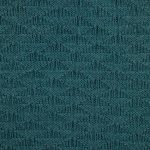How many times have you been shopping for fabric and found yourself asking, “Why is fabric so expensive?” The answer is complicated. Good, quality fabric requires high-tech machinery to weave and knit it.
Then, there are the dyes, the labor costs (some fabrics are very hard to work with), shipping costs all over the world, marketing costs, taxes, and numerous other factors.
Today’s post will explain why some fabrics cost more than others and what you can do about it!
Table of Contents
Fabric Is Expensive, but Why?
You may be surprised to learn that fabric is often made with raw materials. For example, cotton has to be grown and harvested before it can be turned into fabric. Then it has to be processed for use in the manufacturing process. After that, each piece of material must be cut into the right size before being used to make clothing or other textiles. All these steps add up!
So what else makes the fabric so costly? Some types of fabric require more care when they’re being produced than others do—and some are created using techniques that are very difficult or time-consuming.
For example:
- Thin fabrics like organza are very delicate and must be handled carefully so they don’t tear during production; this means manufacturers need special equipment just for making those kinds of textiles!
- Silk fabrics typically come from worms (yes really) which means you’ll need an entire herd just waiting around until you decide what color scheme will work best for tonight’s date night with your partner(s). This also makes silk uneconomical because most people don’t want too much silk lying around at once!
Woven and Knitted Fabrics Use More Yarn.
Fabric is made up of yarn, which is made from fibers. Woven fabrics are created by weaving together the individual strands of yarn into cloth, while knitted fabrics are created by knitting loops around each other. Knit and woven fabrics have different appearances, as well as different costs to produce.
Woven fabrics tend to have more texture than knit ones do because they use more yarn. They also tend to be more durable and can last longer due to their sturdier construction—which means that it’s likely that your shirt isn’t going anywhere anytime soon (notwithstanding many piles of washing).
Yarn for woven fabric often comes from natural fibers such as cotton or wool because these materials don’t unravel easily when sewn together; these types of fabric are typically less expensive than knitted ones made out of synthetic fibers like polyester because they require fewer resources during production but still look stylish enough in most situations!
Repeat or patterns.
The cost of making a pattern is significant, and the cost continues to increase as your business grows. Patterns are expensive to make because of the amount of labor involved: each fabric takes days or weeks to create from start to finish.
This requires many steps, such as creating an original design and then finding someone who can sew it for you (often this is outsourced). Even after it’s made, there are still more costs associated with printing and marketing your patterns—and those costs will only increase with time!
For example, there was once a small company that produced children’s clothing out of recycled garments from thrift stores. They were able to keep their costs down by using pre-existing materials from other companies’ production runs rather than purchasing new materials.
They also had no trouble selling their products online because they didn’t have to compete with established brands in local stores or malls, as Walmart or Target would if they tried to open a store there today.
Some Fabrics Are Highly Labor-Intensive.
There are a few reasons why the fabric can be more expensive than you’d expect, and one of the main ones is that it takes time. It often takes days to make a single yard of fabric, and it’s not uncommon for cloth to be made by hand using traditional methods. In the past, many fabrics were hand-loomed or produced on spinning wheels; some still are today!
Some fabrics are made by machine as well. In these cases, however—as with other products like wooden toys and handmade earrings—the price reflects quality rather than quantity: it costs more for each product because fewer people produce them.
The Manufacturing Process.
Fabric is expensive because it’s made from natural materials. The most common fabric types are made from cotton, wool, and polyester. Other fabrics are made from silk, nylon, and other man-made materials.
Unfortunately for us consumers (but fortunately for the planet), these products take time to make and use a lot of water and energy during production—what we like to call “natural” materials.
Organic Materials.
Organic cotton is grown without the use of synthetic pesticides, herbicides, fertilizers, or genetically modified seeds. This means that organic clothing can be produced with fewer chemicals, which are bad for farmers as well as the environment.
In addition to this, organic materials tend to be more durable than conventional ones because they are free from synthetic chemicals that break down easily.
For example: If you were to wear denim jeans every day for five years straight (which would be insane) and your pair was made out of 100% organic cotton instead of conventional cotton—you could expect them to last significantly longer than their conventional counterpart!
Shipping Costs.
One of the biggest factors in the cost of fabric is shipping. It may seem odd to think that something as light and small as a bolt of cloth could cost so much to ship, but it’s true! Shipping costs vary based on many factors:
- Weight: heavier items are more expensive because they take up more space on the truck or plane and require more fuel to move them around
- Size: larger items cost more since they must be shipped in special containers designed specifically for large items
- Distance: products that need to be shipped long distances will be much more costly than those that can be delivered locally or regionally
Demand and Supply.
Fabric is a big business. The demand for fabric is far greater than the supply. Fabric is like a commodity in that it can be used for many things, including clothing and furniture. Like oil, fabric has become an essential product in modern life as we rely on it more and more to keep our world running smoothly.
Fabric is traded on the market like any other item; buyers (usually large corporations) will buy from sellers (usually small factories) who sell their goods at whatever price they set based on the demand for their products in different markets around the world.
Dyeing is also very expensive.
Dyeing is also very expensive. The reason it’s so pricey is that it requires a large amount of dye to be made and put into each batch of fabric, which means that not only must you pay for the raw materials and labor involved in actually making the dye itself, but you also have to buy enough raw materials for thousands or even hundreds of thousands of yards worth of fabric.
Dyeing is a chemical process; therefore, there are other costs associated with this process besides just the cost of buying raw materials. These include energy usage (dyeing usually requires high temperatures), environmental pollution from wastewater runoff and waste disposal, as well as landfills full of toxic sludge left over from dye production processes.
Plus, since most dyes are made from petroleum products like benzene (a known carcinogen), there’s an additional financial burden due to health risks incurred by workers at these facilities who handle potentially hazardous chemicals every day.
Finally – because dying uses so much space (and sometimes special facilities) – there are also additional costs associated with renting out warehouse space where all these chemicals can be safely stored before being shipped off elsewhere.”
Marketing costs money too.
Marketing costs money too. It may not seem like it, but when you factor in the costs of buying photos for a catalog or social media posts, paying models to model clothes on Instagram, and paying people to travel and attend trade shows, marketing ends up being a significant part of the final price tag.
If your head is spinning at this point, don’t worry—we’re not done yet!
How Much Do Fabrics Cost?
Fabrics can vary in cost depending on the type of fabric. For example, silk is usually more expensive than cotton because of its fineness and softness.
The price of the fabric will also depend on how much material is used to make it up. For example, a dress made from silk might cost more than one made from cotton; this is because there are fewer types of material being used to create that item compared with another one made out of multiple fabrics (such as a shirt).
Do Fabrics Vary in Quality?
Yes, fabrics do vary in quality. Some are better than others, and that’s why they cost more. High-quality fabrics have several benefits over low-quality ones:
- They’re more durable because they’re made to last longer and stand up to wear and tear
- They feel nicer on your skin than cheaper alternatives; good quality fabric can be softer and smoother against your skin, making it more comfortable to wear (especially when you consider how long you’ll be wearing it)
- They breathe better; high-quality fabrics absorb moisture from the air so that your clothes don’t get clammy when you sweat or get wet from rain or snow
- Wrinkle resistance is another benefit of better quality cloth—it’s not just about looks but also about convenience for people who don’t have time to iron all their clothes each morning!
What Makes Fabrics Expensive or Cheap?
Fabric Quality
When you buy a shirt, you’re not just paying for the fabric — you’re also paying for the labor it took to produce that fabric. High-quality fabrics have a higher thread count, which means that more threads are used per inch of fabric and the resulting cloth is softer and more durable. The higher cost of these types of fabrics comes from their production process:
They require more time and work, so they cost more to make. For example, if it takes 10 minutes to weave one piece of cotton into a shirt but only five minutes with polyester fabric, then producing that cotton shirt will be much pricier than making one with polyester (and vice versa).
Fabric Weight
The weight of your clothing is an important factor in determining its price tag because heavier materials take longer to make than lighter ones do — so they’re often pricier too!
If all else were equal between two shirts made out of similar materials (i.e., same color scheme), then I would always recommend buying something lighter instead of heavier simply because it’s less likely that dirty laundry will pile up in your closet at home when things get busy around here!
One thing I’ve noticed about this particular aspect as well is how some stores might have different names describing exactly where their fabrics come from – like “Italian silk” versus “French silk” – but when comparing prices side by side there doesn’t seem like much difference between them after all…so perhaps there isn’t much value added here either way?
What Is the Most Expensive Fabric?
Silk is one of the most expensive fabrics in the world, as it’s a natural fiber produced by silkworms feeding on mulberry leaves. The price can vary depending on how much silk is used and what type of fabric you want to make.
Cashmere, which comes from goats in central Asia, has long been prized for its warmth and softness. The fibers are more delicate than wool or cotton and therefore more difficult to work with—which makes them more valuable!
Velvet is another natural fiber (sheep’s hair), but it’s made from shaved flocks rather than spun yarn. It’s also woven into elaborate patterns that require lots of skill to create—hence its high price tag! Velvet can be found in everything from curtains to the upholstery fabric to dresses:
Tweed fabrics are some of the most traditional options available today—they’ve been around for centuries! You’ll find tweeds in everything from jackets to dresses because they’re versatile enough for both formal attire and casual wear:
Linen is made from flax plant fibers that have gone through multiple processes before they end up being woven into a soft yet durable fabric that’s breathable enough for summer wear while still keeping you warm during the winter months.
Why Is Silk Considered a Luxury Fabric?
Silk is a luxury fabric because it’s rare. It’s rare because it’s difficult to produce, and that difficulty comes from the natural nature of silk, which is why silkworms make cocoons.
Fabric Is Expensive, but How Can You Save Money?
You can save money by buying fabric on sale and being careful to buy the right amount.
While it’s true that fabric is expensive, there are some ways you can save money on your next fabric purchase.
First, buy fabrics on sale. To do this, visit the website of a major retailer in your area and check out their sales page. You may also want to sign up for their email list so they can send you coupons or special offers that don’t show up anywhere else.
Second, buy the right amount of material for what you need to make. For example: If you’re making curtains for your living room window, then go with a nice heavy-weight cotton voile or silk brocade instead of buying cheap polyester ginghams from Walmart (which will be cheaper but won’t look nearly as nice).
Or if all you need are three yards worth of trimming for an evening dress made from silk organza—and not much else—then why bother spending $30 per yard on chiffon?
Thirdly and finally: Shop around! Even though prices may seem high at first glance (especially when compared with bargain-basement prices online), keep in mind that different manufacturers charge different rates depending on where they’re located geographically; therefore it never hurts—and often helps—to shop around before committing yourself fully.”
Conclusion
So there you have it: a few reasons why the fabric is expensive, and why it should stay that way.
If you’re looking for the best value in fabric, look for fabrics that are woven and knitted with minimal use of yarn. The more yarn a fabric uses, the more labor-intensive its manufacturing process will be.
Also, keep an eye out for fabrics with intricate patterns or designs—these require more time to produce than simple shapes do.
And finally, be sure to check out our blog on organic materials; that’s another way to get high-quality fabrics at a good price!
- The Essential Guide to Woven vs. Nonwoven Textiles - July 11, 2025
- All Your Questions About Nonwoven Fabric Answered - July 11, 2025
- Why Nonwoven Interfacing Is a Sewer’s Best Friend - July 11, 2025





